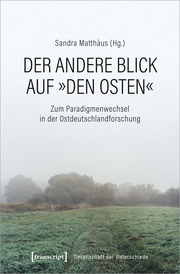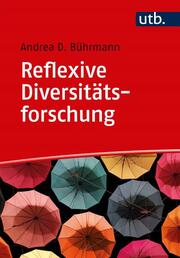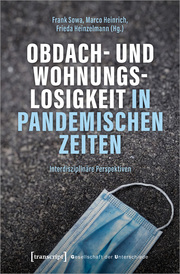Encyclopedia of Migration (gebundenes Buch)
Encyclopedia of Migration
5 Bde, Encyclopedia of Migration
Erscheint am
26.10.2026
Bibliographische Informationen
ISBN/EAN: 9789400727854
Sprache: Englisch
Seiten: 2000 S.
Auflage: 1. Auflage 2027
Bindung: gebundenes Buch
Beschreibung
InhaltsangabeTOPICS AND SUBTOPICS: (first draft) - Basic Outlines of Migration Migration comprises a foundational unit of the study of any population. Measured in conjunction with births and deaths, migration into and out of any place determines the ultimate size of the population. Migration is a specialized form of moving that involves distinct components of distance, duration and residence. Conceptually, migration is often differentiated into internal and international flows. Internal migration historically has consisted in large part of continued urbanization of a previously rural population, but it may also show counterstreams moving from cities to suburbs. International vs. internal - Distance and activity space, duration, and national versus local boundaries. Change in circulation Partial vs. total displacement migration International as product of Westphalian system of nationstates Growth of regulation in 20th century Growth in typologies of migrants Diasporas may exist without nationstate identification Kinds of migration - Primitive, or nomadic Voluntary, or agentbased, within large groups or clans or smallscale, as individuals or households Authorized, legal, documented Unauthorized, illegal, undocumented; "aliens" Involuntary, or forced, impelled. Displacement, warfare; environmental degradation and disaster Human trafficking, slavery Refugees, asylees Circular, or returning migration, sojourner vs. settler Step migration Nonmigration International: students, tourists, business travelers; foreignborn vs. immigrants Internal: Recurrent movement (commuting, daily crossings, seasonal work) II. Measurement of Migration and Statistical MethodologyThis topic covers the general demographic and statistical concepts underpinning migration research. Initially, migration research followed a standardized set of concepts and measurements derived from demographic research and often dependent upon the geographical units within which data are collected. However, the research has expanded into multiple fields with many methodologies, both qualitative and quantitative. Demographic concepts - Flows vs. stocks Areas of origin and destination Emigration and immigration Differential migration Gross and net migration Components of change (residual) estimation; forward survival. Status and propensity rates, probabilities, inmigration, outmigration rates, net migration Estimates and population projections Distance, distance decay, gravity models Efficiency: ratio of streams to counterstreams Migration histories Economic and sociological models - Econometric models and general models of inequality, within and between cities or countries Multivariate regression analysis Ethnographies Spatial analysis - Geographic Information Systems, with database of attribute information, boundary files, digital map layers, analysis tools and user interface. Political and data units: e.g. wards, counties, metropolitan areas, states, provinces, nations III. Migration DataMigration data vary widely across countries, both in terms of scope of collection and basic understanding of the definition of migration. This section examines the types of dat
Autorenportrait
Dr. Ueda is a historian of the United States and of migration. He has explored global migration and its effects on societies and regions in Postwar Immigrant America (St. Martin's Press) and Crosscurrents: Atlantic and Pacific Migration in the Making of a Global America (Oxford University Press). He studied the role of local migrations in the rise of public education in Avenues to Adulthood (Cambridge University Press). Dr. Ueda was a research editor of the Harvard Encyclopedia of American Ethnic Groups (awarded the Waldo Leland Prize of the American Historical Association) and co-editor (with Mary C. Waters and Helen Marrow) of New Americans (Harvard University Press).He is also co-editor of the Journal of Interdisciplinary History (MIT Press). Dr. Ueda's research has been supported by fellowships from the Woodrow Wilson International Center, the National Endowment for the Humanities, the American Council of Learned Societies, and the Charles Warren Center at Harvard.A member of the Tufts History Department faculty since 1981, Dr. Ueda has been a visiting professor at Harvard University and Brandeis University. He is co-chair of a consortium, the Inter-University Committee on International Migration at the MIT Center for International Studies.Dr. Bean is a social scientist with 35 years of experience as a researcher, teacher, administrator and public policy analyst. His PhD is in sociology and his dissertation was written in social psychology. As a graduate student at Duke University, in addition to his work in sociology and social psychology (with Alan C. Kerckhoff, Kurt Back and Edward E. Jones), he took courses in demography and worked on research projects for three distinguished demographers (Reynolds Farley, Nathan Keyfitz and Hal Winsborough), all of whom subsequently became foundational leaders in population studies at prestigious universities in the United States (Michigan, Harvard and Wisconsin respectively). As the founding Director of both the Population Studies Center and the Immigration Policy Research Center at The Urban Institute in Washington, DC, Dr. Bean has also conducted work in and developed extensive knowledge about the economics of population and migration. He is currently Chancellor's Professor of Sociology and Economics at the University of California, Irvine.Dr. Brown is a tenured Associate Professor of Sociology at the University of California, Irvine. She is a sociologist/demographer whose areas of specialization are immigration, residential segregation and urban sociology. As a result of conducting research in these areas, she has also developed considerable expertise in geography and urban policy. In addition to her academic and research specializations, she also brings more than fifteen years of journalistic experience as a reporter and editor starting when she was on the staff of the Harvard Crimson and including nearly twelve years with the St. Louis-Post Dispatch.
Andere Artikel von "Frank D Bean/Susan K Brown"
Lieferbar innerhalb ca. einer Woche

Weitere Artikel aus der Kategorie "Soziologie/Sozialstrukturforschung"
Vergriffen

Lieferbar innerhalb 24 Stunden

Vergriffen

Lieferbar innerhalb 24 Stunden







